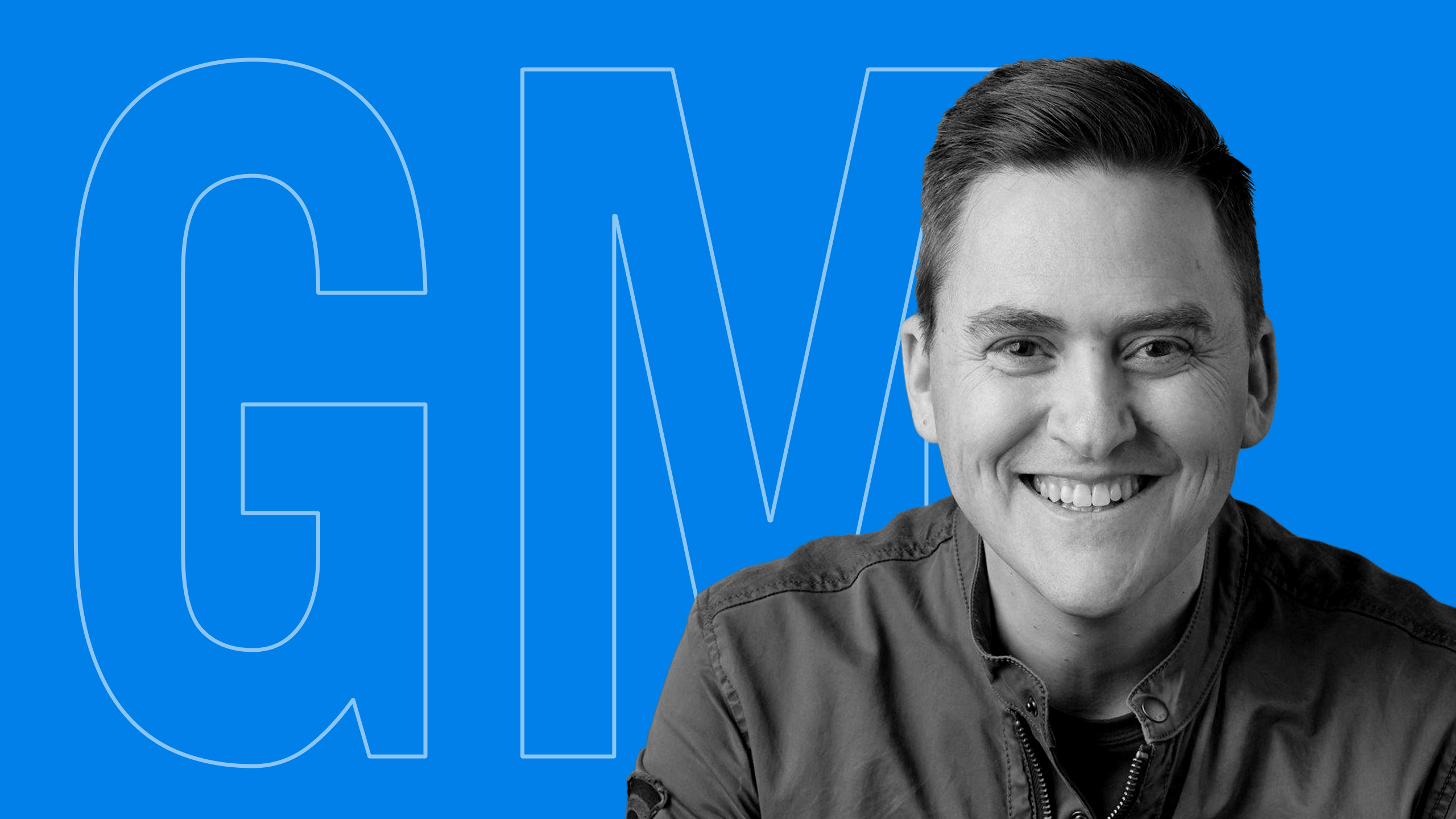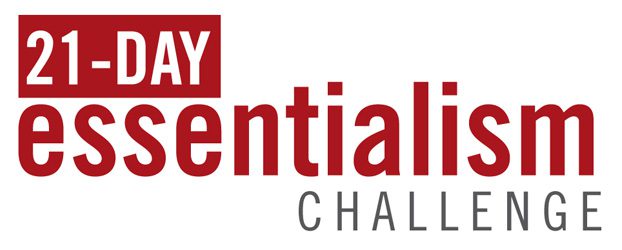Greg McKeown (00:04):
Welcome. I’m your host, Greg McKeown. I’m the author of two New York Times bestsellers, Essentialism and Effortless. And I’m here to learn how to be better at negotiation in conflict resolution. I’m here with you on this journey. Have you ever felt that you were right and the other person was wrong? Have you ever felt absolutely sure about it? Are you feeling that way about someone right now today? I will share a story, something I am learning, and actionable advice. By the end of this episode, you will be able to escape the costly trap of trying to be right all the time. Let’s get to it.
Greg McKeown (01:16):
Remember to teach the ideas in this podcast to someone else within the next 24 to 48 hours of listening. And if teach seems too strong, just share it with someone. Talk about it, discuss it together. “Steve always gets it right,” barked Andy Grove, Intel’s legendary CEO, over a cup of almond fudge at Baskin Robbins in Los Altos. Kim Scott, the author of Radical Candor, was asking his advice on whether she should join Apple. Kim laughed, thinking he was making a joke, but Andy shook his head at her vehemently. “No, you didn’t understand me. Steve always gets it right. I mean, precisely, like an engineer. I’m not joking. I’m not exaggerating.” Kim knew Andy was telling her something important, and a part of her hoped. It was true. One of the things that was appealing to her about going to Apple after having worked in Google’s more creative chaos was seeing what it would be like to work at a company where more assertive management, even telling people what to do, actually worked.
Greg McKeown (02:34):
Kim assumed that that was how things got done at Apple, that Steve Jobs, visionary, told people what to do, but she still assumed Andy was exaggerating. Always right? “Nobody’s always right,” she said. “I didn’t say Steve is always right. I said, he always gets it, right? Like anyone, he is wrong sometimes, but he insists, and not gently either, that people tell him when he’s wrong. So he always gets it right in the end.” After Kim took the job at Apple, she learned that Andy’s description had been accurate. Steve often demonstrated that he was willing, eager even, to change his mind when he was proven wrong. And this didn’t play out in a gracious “You were right. The mistake was mine” sort of manner. People could sometimes even be infuriated by the way, Steve changed his mind. One colleague told Kim about a time he’d argued with Steve but eventually backed down, even though he wasn’t convinced by Steve’s reasoning. When events subsequently proved the colleague right, Steve marched into his office and started yelling.
Greg McKeown (03:46):
“But this was your idea,” said the colleague. “Yes,” said Steve, “and it was your job to convince me I was wrong, and you failed.” From then on, the colleague argued longer and more loudly and kept arguing until either he convinced Steve or Steve convinced him. Thus, Steve got it right by being willing to be wrong. And by insisting that the people around him challenge him, he hired people who were not afraid to argue with him. And then he pushed that fearlessness further. Another colleague told Kim about an argument she’d had with Steve. She eventually persuaded Steve that he was wrong, but then he so thoroughly adopted her position that it was as if it had been his all along. She speculated that Steve was so focused on getting to the right answer, that he genuinely didn’t care who’d said what. Now, obviously, this approach could be frustrating.
Greg McKeown (04:48):
People want credit for their ideas, but the relentless focus, according to Kim, on challenging himself and those around him to get it right rather than to be right was part of what drove Apple’s breathtaking ability to execute so well. Well, what about you? Have you ever felt you were right and the other person was wrong? Have you ever felt absolutely sure about it? Have you ever focused on being right instead of getting it right? I was faced with an interesting example just like this. The situation was a board meeting of a successful company, perhaps a dozen people in the conference room at a hotel in California overlooking the ocean. The people in the room to a person were capable, passionate, and opinionated. The reason we were there was to make a major decision for the future of the company. And my job was to spend the day facilitating how the board approached that decision.
Greg McKeown (06:03):
The problem as the day continued was that after we’d framed the decision to be made after having each person share their point of view and the evidence to support that decision, they were all of the same opinion, other than one person who saw it from another point of view. They were hesitant to speak up once they discovered they were completely alone. And almost capitulated, just gave in to the pressure of the other 11 board members seeing it clearly one way. So what do you do about it in that situation? What I did is I asked them to argue the whole decision again, but this time to argue the opposite of their own opinion, they had to craft their argument, their position opposite of the one that they had concluded, and find evidence to support the opposite of the argument that they had originally held. And as we went through that process, a startling thing occurred.
Greg McKeown (07:13):
Every single person actually changed their minds, and they could not believe it. They really marveled at how sure they had been. And now how sure they were again. They sat there for a moment, stunned by the result of the exercise, how right they had felt, how sure they were, that they were seeing things as they really were, and to see things from the opposite perspective and to again feel sure that they were right. What to make of it? What happened is that the group became open, really open, instead of pushing harder for a position they already had instead of trying to be right. They focused on looking for the best decision, trying to get it right. By the end of that day, they had decided what to do. It was a better solution than either of their previous positions had been. And they moved forward in a unified way as a board, as a team.
Greg McKeown (08:16):
I remember even later that evening, Anna and I were eating dinner, and the team made a point of finding us elated. They had broken through not just this decision, this loggerhead, but also in their ability to work together, to communicate together. It was a palpable energy and emotional connection with each other. That was a double benefit. Here’s what I learned: To get it right, argue that you are wrong. Well, that’s what I learned. But what about you? Let’s come back to the questions. Have you ever felt you were right? If the other person was wrong, have you ever felt absolutely sure about it, even emotional about it, defensive about it? Now, have you ever found out later that you were wrong or at least partially wrong? Maybe you didn’t even want to admit it. To get it right, argue that you are wrong.
Greg McKeown (09:22):
Now, two warnings for implementing this. The first is beware of making straw men arguments. No straw men arguments allowed. Now, you know, there are lots of examples of a straw man argument. But also known as a straw man fallacy occurs when someone takes another person’s argument or point, distorts it or exaggerates it in some kind of extreme way, and then attacks the extreme distortion as if that is really the claim the first person is making. So you could imagine it this way, employee one says, “I’d rather have a new hire than buy the new server.” And the manager responds, “Why do you hate it so much?” No, you can’t do that because you’re making a leap. The employee did not say that he hated it, only that he’d prefer to hire someone new. The manager either assumed or pretended that the employee’s argument was against it rather than for the new hire.
Greg McKeown (10:30):
Now, the employee must argue that they don’t hate it, which completely changes the course of the discussion. So no straw men arguments. Second, silence can be the non-confrontational form of being right. When we think of someone who has to be right all the time, we tend to think of a Knowit-all, the person who talks too much, who leads with why they are right. They express their desire to be right through their words. And this clearly does happen. However, there is another kind, and in a corporate environment, it is even more common silence. We don’t openly disagree for fear of being judged or even penalized. We don’t want to make a career-limiting move. So we silently disagree. We hold our conflict close to our vest. We let it out, but not in the meeting. You know what I’m talking about, where the real meeting happens after the meeting has passed. That quiet disagreement is at least as damaging and perhaps more so than expressing disagreement openly.
Greg McKeown (11:47):
We create victim and villain stories. We create private agendas that can sometimes even seethed below the surface and will manifest itself in ghosting, in gossiping, in words, with hidden meanings in the tone of our voice, in our involuntary body language, in unsupported decisions, and more. In order to get it right, we will need to learn how to get beyond this more cowardly form of conflict and also to do it in a way that doesn’t just harm relationships and our own standing. Let’s end on a little poem you may be familiar with. My children love this: “Here lies the body of Thomas Gray, who died defending his right of way. He was perfectly right as he sped along. But he’s just as dead as if he’d been wrong.” Stop trying to be right and start instead trying to get it right. Thank you. Really thank you for listening.
Greg McKeown (12:54):
What a difference you are making by listening to this, by sharing it with others, by teaching it to other people. What would happen if you could get the people who matter most to you in your life to be able to communicate in the way that we are learning together? To be able to understand each other? To be able to speak up instead of vulnerably, holding on to the most important things people wish they could share? To be able to bring forth that kind of openness of communication? With that kind of openness, we can solve anything. We can work through almost any problem. We can make progress and use our precious resources and time to actually do the essential work instead of getting caught up in the relationship conflicts, the dysfunctions, and the toxic cultures that come with that approach to communication. If you found value in this episode, please write a review on Apple Podcasts.
Greg McKeown (13:52):
The first five people to write a review of this episode will get a signed copy of Effortless. Just send a photo of your review to info@gregmckeown.com. Alternatively, have three people just put a five-star review in Apple Podcasts and send a picture of their reviews. They don’t even have to write the reviews, but it’s just a way to encourage you to help other people get on this journey together. If you haven’t yet signed up for the free 1-Minute Wednesday newsletter, you can do that at Gregmckeown.com/1MW. If you’d like to be part of a live series where we’re going to practice negotiation and conflict resolution skills, then sign up now at essentialism.com/negotiation. The details are yet to be announced, but you’ll be the first to know once we run it. Remember to subscribe to this podcast right now so that you can receive the next episode. Let’s continue the conversation then and do it in a way that we can build a movement together.







